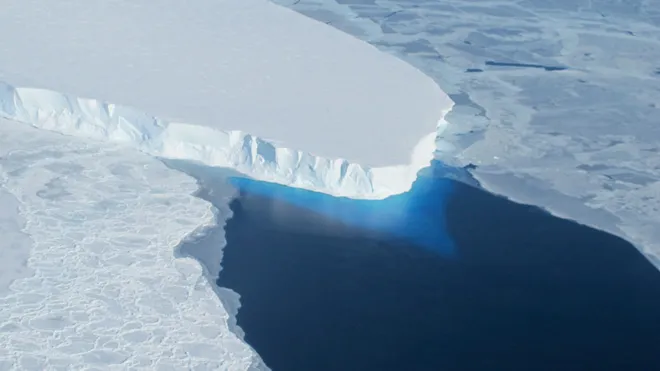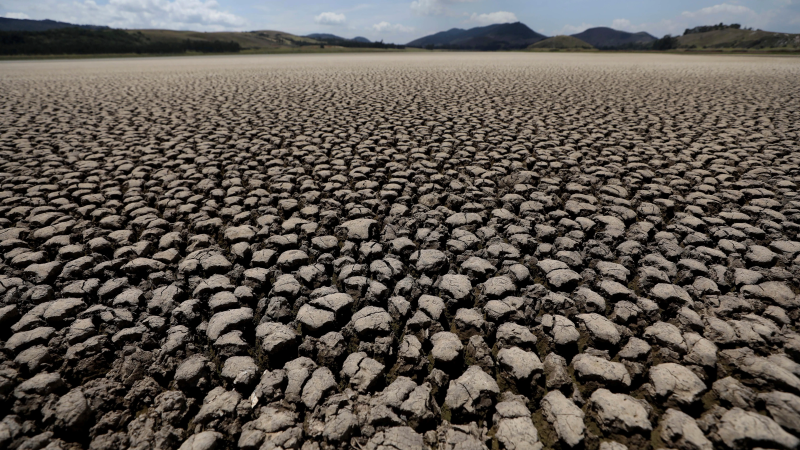Scientists closely watching these 3 disastrous climate change scenarios
A host of potential climate change catastrophes worry scientists, but some scenarios are so dire that experts are constantly monitoring how close we are to disaster.
This week brought some good climate news about one those scenarios in Antarctica: The so-called "Doomsday glacier" may be more stable than previously thought, according to new research published Wednesday.
The Thwaites Glacier on the vast West Antarctica Ice Sheet is commonly called the "Doomsday Glacier" because of its potential to significantly raise sea levels, inundating low-lying coastal communities and displacing millions of people.
Meanwhile, scientists keep tracking several other potential large-scale climate troublemakers. Scenarios including the Atlantic Meridional Overturning Circulation (AMOC) and the Greenland ice sheet have the potential to radically reshape life on Earth in the coming years, decades or centuries.
Here's the latest:

'Doomsday glacier': Worst-case scenario is unlikely, for now
The Thwaites Glacier has been studied for years as an indicator of human-caused climate change.
In one nightmare scenario, the glacier's melt fuels a 50-foot rise in sea level. The Florida Peninsula would be submerged, save for a strip of interior high ground spanning from Gainesville to north of Lake Okeechobee, with the state's coastal cities underwater.
That scenario now looks unlikely — for now, the new study says.
"We know this extreme projection is unlikely over the course of the 21st century," said study lead author Mathieu Morlighem, a Dartmouth University professor of earth sciences, in a statement.
The good news comes with plenty of caveats. Authors stress that the accelerating loss of ice from Greenland and Antarctica is nonetheless dire.
"Unfortunately, Thwaites Glacier is still going to retreat and with it most of the West Antarctic ice sheet, but not as rapidly as one scenario suggested," Morlighem told USA TODAY in an e-mail. He added that even though a rapid collapse was a "low likelihood" scenario in the latest report from the Intergovernmental Panel on Climate Change, "we show is that it is even less likely than we thought."
Sea level is probably going to rise by roughly 2-3 feet by the end of the century and continue to rise after, as the ice sheets continue to melt, he told USA TODAY.

Greenland's ice sheet: A mix of good and bad news
There's been mixed news about a similarly troubling ice sheet in Greenland.
Overall, the ice sheet covers more than 656,000 square miles, and if it were to fully melt, the global sea level would rise about 20 feet, according to the National Snow and Ice Date Center.
News continues to be worrisome in Greenland, which is losing about 270 billion tons of ice per year, adding to sea level rise, NASA said. A study earlier this year found that the ice sheet in Greenland is melting faster than researchers had thought.
But a study last year found that the sheet may be more resistant to climate change than once thought.
Basically, the study found that "the worst-case scenario of ice sheet collapse and consequent sea-level rise can be avoided – and even partly reversed – if we manage to reduce the global temperatures projected for after 2100," previously said Bryn Hubbard, a professor of glaciology at Aberystwyth University in Wales.
AMOC collapse: Scientists still studying feared 'Day After Tomorrow' ocean current
The Atlantic Meridional Overturning Circulation (AMOC) – a large system of ocean currents that carry warm water from the tropics into the North Atlantic – could collapse by the middle of the century, or possibly any time from 2025 onward, because of human-caused climate change, a study published last year suggests.
The AMOC gained international attention in 2004 with the release of the scientifically inaccurate disaster movie "The Day After Tomorrow," which used such an ocean current shutdown as the premise of the film.
An AMOC collapse in real life could trigger rapid weather and climate changes in the U.S., Europe and elsewhere. If it were to happen, it could bring about an ice age in Europe and sea-level rise in cities such as Boston and New York, as well as more potent storms and hurricanes along the East Coast.
Another study suggests the collapse could occur by 2050, but the research is still preliminary. Earlier this year, a published study found a collapse of the current was coming at some point, but didn't offer clues as to when it could occur.
Disclaimer: The copyright of this article belongs to the original author. Reposting this article is solely for the purpose of information dissemination and does not constitute any investment advice. If there is any infringement, please contact us immediately. We will make corrections or deletions as necessary. Thank you.






